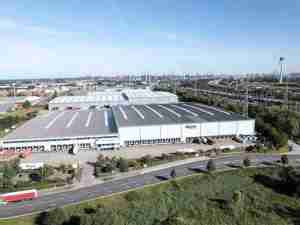InlandLinks(http://www.inlandlinks.eu/nl) is the online platform for container terminals in the hinterland, offering inter modal services to/from Rotterdam. The terminals are presented on the basis of objective and comparable criteria. This enables all participants in the logistics chain to identify the general and specific advantages better .It also contributes to a rise of intermodal transport by train and barge of the flow of containers that triples in the next 25 years. Ninety percent of the Dutch hinterland terminals organised in the VITO (Dutch Inland Container Terminal Organisation) participates in InlandLink which is an initiative of the Port of Rotterdam Authority and developed further in cooperation with VITO. Now. The concept is introduced in Germany and Belgium.
Tripling
Rotterdam expects to see container flows triple in the next 25 years. Due to the growth in world trade, the favourable geographic location and the increase in very large container ships, each with a capacity in the region of 20,000 units. Of the total of some 30 million TEU handled in 2035, approx. 2 million are expected to be shipped in and out using smaller vessels from and to European ports. Some 18 million TEU will travel to and from the hinterland via intermodal transport. For this flow, InlandLinks should give insight in better and more sustainable connections.









